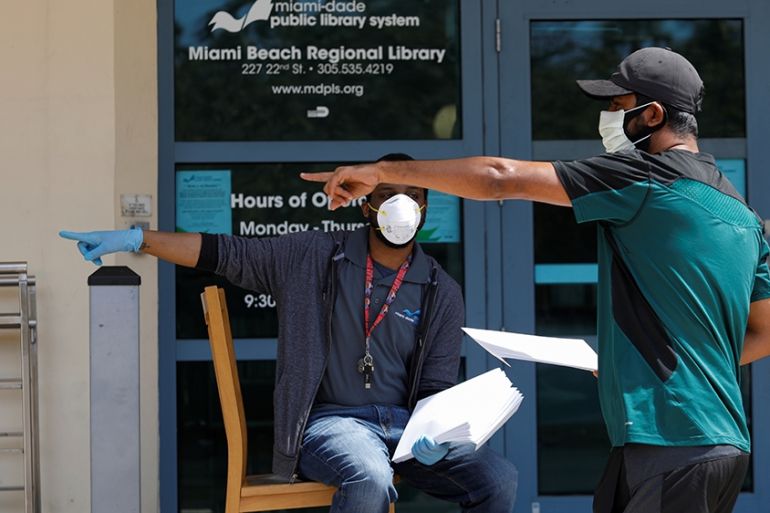Millions of Americans still can’t access jobless benefits: survey
Some 26.5 million Americans filed for unemployment benefits in the five weeks ending on April 18, according to data.

Millions of Americans who have lost their jobs to coronavirus lockdown measures have been unable to file for unemployment benefits as the systems around the United States buckle under the sheer volume of new claims, a survey released on Tuesday finds.
A survey conducted by the progressive Washington, DC-based think-tank the Economic Policy Institute (EPI) found that for every 10 people who successfully filed for jobless benefits over the past four weeks, there were three to four people who tried to apply but could not access systems, and two people who did not even try to apply because they found the process too difficult.
Keep reading
list of 3 itemsRecord 26m jobless in US since coronavirus hit: Live updates
Trump slams cities, states seeking US aid to offset coronavirus
“These findings imply the official count of unemployment insurance claims likely drastically understates the extent of employment reductions and the need for economic relief during the coronavirus crisis,” EPI Economists Ben Zipperer and Elise Gould wrote in a blog post published on Tuesday.
Some 26.5 million Americans filed initial US jobless claims in the five weeks ending on April 18, data released by the US Department of Labor shows.
“When we extrapolate our survey findings to the full five weeks of UI [unemployment insurance] claims since March 15, we estimate that an additional 8.9‒13.9 million people could have filed for benefits had the process been easier,” Zipperer and Gould wrote.
Many workers who have lost their jobs to coronavirus containment measures have described the difficulties of trying to access websites and hotlines for state unemployment benefits that have been overwhelmed by a tsunami of applications.
EPI surveyed 24,607 US adult internet users using Google Surveys between April 13 and April 24. The poll has a confidence interval, an indicator of accuracy, of plus or minus one percent.
States like New Jersey and Georgia have struggled to find staffers who know how to update computer systems that run on decades-old technology. Other states that have updated systems have also encountered IT problems.
States have had to incorporate a federal top of $600 per week and extend coverage to independent contractors and gig workers who were previously ineligible for unemployment benefits.
Many states also entered the crisis with fewer workers to handle unemployment claims as an improving economy had allowed them to cut staff.
States had the equivalent of 26,360 full-time workers in their unemployment offices in the 2018 fiscal year, according to the US Department of Labor, down 30 percent from staffing levels during the peak of the Great Recession in 2009 and 2010.
Many Americans who managed to file claims have yet to receive payments weeks after they lost their jobs.
Labor Department statistics show that 71 percent who apply are getting payments, although that figure varies significantly by state.
Florida, for example, said on Saturday that it had sent payments to roughly one in five of those who had successfully submitted claims.
EPI used the survey results to call on states to streamline the benefits release process during a time of unprecedented disruption to the US economy.
“At a minimum, states should presume everyone is eligible and immediately pay benefits, only verifying eligibility and reviewing claims after the unprecedented wave of claims slows down,” Zipperer and Gould wrote.